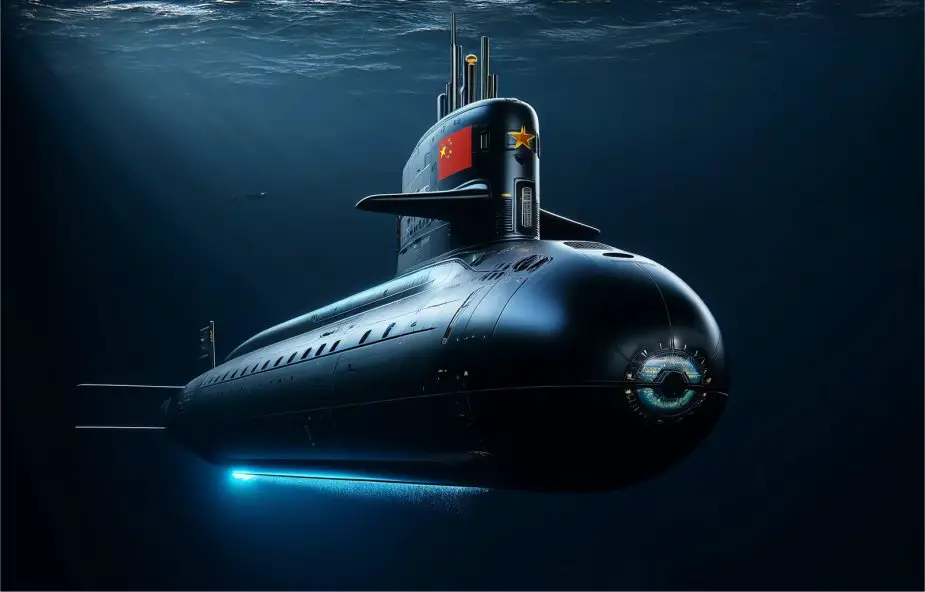According to information published by 高天SEK on April 24, 204, China has reported a significant breakthrough in laser propulsion systems for submarines.
Follow Navy Recognition on Google News at this link
 Artist rendering of a futuristic submarine. (Picture source: Generated by AI)
Artist rendering of a futuristic submarine. (Picture source: Generated by AI)
Chinese scientists have achieved a groundbreaking advancement in submarine propulsion systems with the development of a laser-engineered, supersonic, and silent submarine.
This cutting-edge technology utilizes a 2-megawatt laser energy system that can generate nearly 7 tons of thrust, equivalent to a commercial jet engine. The propulsion system operates without mechanical parts, using fiber optics thinner than human hair to concentrate laser energy, thus eliminating vibrations and enhancing the submarine’s stealth capabilities underwater.
This novel approach allows submarines to travel at speeds exceeding the speed of sound while remaining acoustically invisible to sonar detection. The technology leverages supercavitation around the submarine's hull, transforming water into steam with laser pulses, significantly reducing drag.
Conversely, the United States has been exploring magnetohydrodynamic (MGD) propulsion since the 1960s, offering a non-mechanical alternative to traditional propeller systems. MGD propulsion uses magnetic fields and electrically conducting fluids to generate thrust.
Despite its potential for stealth and maneuverability, challenges in developing suitable superconducting magnets and other supporting structures have hindered its practical application.
In May of the previous year, the Defense Advanced Research Projects Agency (DARPA) in the U.S. initiated a 42-month project to develop MGD-powered engines. Although the project has reported preliminary success, issues such as generating strong magnetic fields and electrode corrosion due to seawater exposure remain unresolved.
In comparison, China's laser propulsion system avoids many of the mechanical complexities associated with traditional and MGD propulsion systems. The potential for integration with nuclear power sources and advanced battery technologies like lithium-ion cells could make these submarines more effective and versatile. However, the high energy requirements and safety concerns associated with lithium-ion batteries, particularly their tendency to overheat, pose significant challenges.



